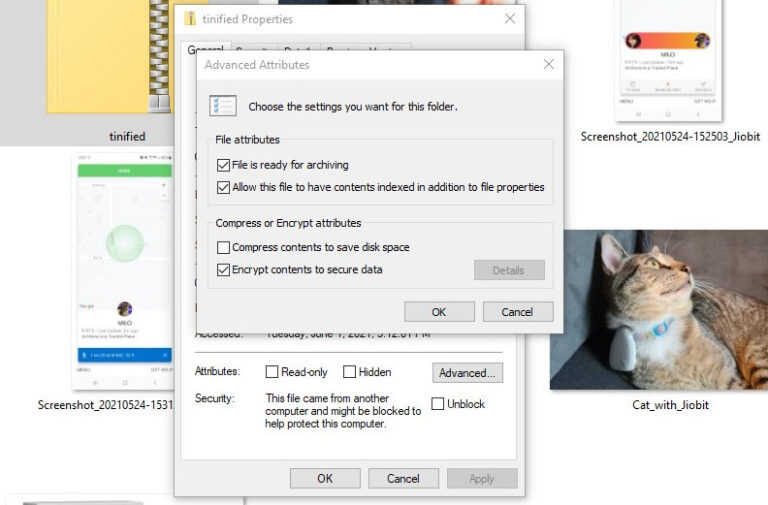Chances are you’ve taken measures to secure your computer from unauthorized access, but what about individual files and folders? When it comes to keeping your personal information private, it’s worth the extra effort to add password protection to computer folders.
How Do I Protect My Computer Folders?
For over 11 years, SafeWise experts have conducted independent research and testing to write unbiased, human reviews (not robots). Learn more.
By signing up, you agree to our Terms and Conditions and Privacy Policy.

Screenshot: Alina Bradford, SafeWise
There’s more than one way to restrict access to important files and folders on your computer. The software or operating system you use will affect the options available to you to password protect folders.
1. Encrypt files and folders in Microsoft Windows
You can protect files through encryption in most Windows versions.* Here’s how:
- Find and select the folder or file you want to encrypt.
- Right-click on the folder or file and select Properties.
- Open the General tab, and select the Advanced button.
- Check the box next to Encrypt contents to secure data.
- After checking the box, select Apply and click OK.
Now the files are in a protected folder. This process will also work on a zip file.
*Home editions of older Windows versions may not have the encryption feature available.
2. Password protect folders and files in Microsoft Windows
If you use Windows 10, you can create hidden folders that are password protected without needing special software. You can also edit the permissions settings of a folder to control access to the contents.
- Find and select the folder you want to protect.
- Right-click the folder and select Properties.
- Open the Security tab, and click on Edit.
- Select a user name or group and click Deny Access. After access is denied to a user or group, an administrative password will be required to access the folder.
3. Password protect folders and files on Mac
The process is similar if you use a Mac.
- Find and select the folder you want to protect.
- Right-click the folder and select Get Info.
- Open the Sharing & Permissions tab.
- Select a user name or group and select the access or “privilege” you want to allow (Read Only, Read & Write, or No Access).
4. Protect files on Google Drive
If you use Google Drive, you can add security and privacy to your documents.
- Find and select the document you want to protect.
- Click the Share button in the top right corner of the screen.
- Click the Advanced button in the bottom right corner of the pop-up box.
- Check the box next to Disable options to download, print, and copy for commenters and viewers.
Click the Save Changes button, then click Done.
5. Other tips to protect computer files and folders
Because it’s difficult to set up foolproof file protection from a determined hacker, it’s smart to use redundant security protocols and other privacy tools when possible beyond a locked folder with encrypted files.
- Use a compression tool
You can archive sensitive files, compress them, and encrypt the contents with a required password.
- Install third-party software
There are a number of programs available to help you encrypt data or password protect folders and files. Some, like 7-Zip, are free, while others like Folder Guard must be purchased.
- Back up important files
Even if something is protected with a password, it can still be deleted. Make sure to keep a backup of all your important files and folders.
- Keep track of passwords
Few things are worse than forgetting the password to an important document. Use a password manager to keep track of file and folder passwords. As an extra measure, make an unprotected archived copy of documents that you password protect. You can store them in a lockbox on a USB drive or external hard drive.
- Use anti-malware
Installing the extra protection of an antivirus or anti-malware program helps keep your whole system safe as well as individual files and folders.
- Protect your smart home from hacking
Using strong passwords, choosing the right smart home tech, and more can prevent bad actors from accessing your files. Our guide on protecting your smart home will get you started.
For more on keeping your personal information safe, be sure to check out these tips to prevent identity theft and our picks for the best identity theft protection tools.
Compare the best internet security products
Amazon.com price as of post date. Offers and availability may vary by location and are subject to change. Read full disclaimer.
*First year only. Regular price $99.48/yr.
**First year only. Regular price $59.99/yr.
Product prices and availability are accurate as of the date/time indicated and are subject to change. Any price and availability information displayed on Amazon at the time of purchase will apply to the purchase of this product. Safewise.com utilizes paid Amazon links.
Recent Articles




